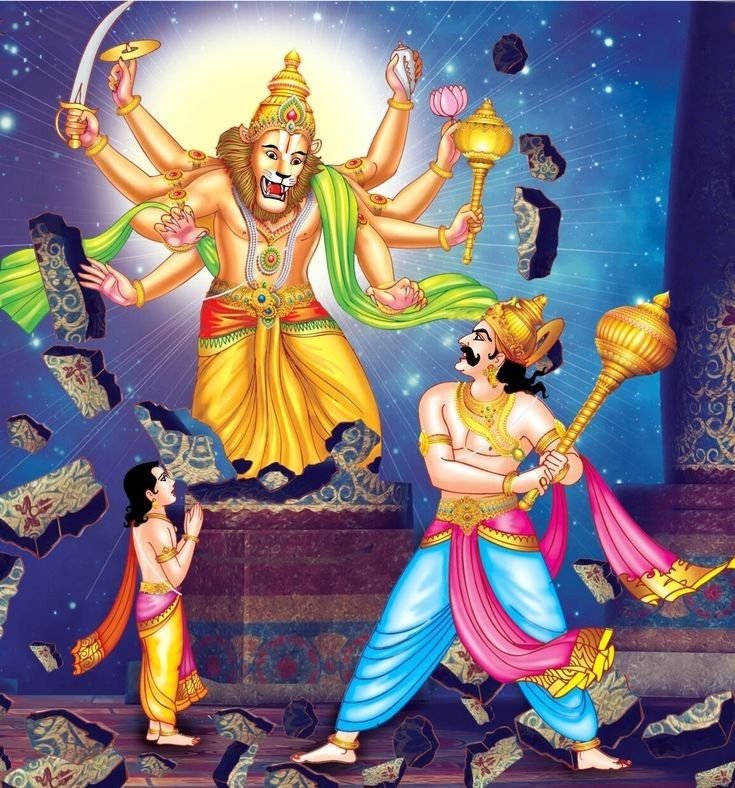Lakshmi Narasimha pancharatnam Stotram
Lakshmi Narasimha pancharatnam

The Lakshmi Narasimha Pancharatnam is a revered five-verse hymn composed by the great saint and philosopher Adi Shankaracharya in praise of Lord Narasimha, the fierce and compassionate man-lion incarnation of Lord Vishnu, along with his divine consort Goddess Lakshmi, the goddess of wealth and grace. The word “Pancharatnam” means “five jewels,” and indeed, each of the five verses in this stotra is a radiant jewel of devotion (bhakti), protection (raksha), and spiritual knowledge (jnana).
Lord Narasimha is best known for his appearance in the Bhagavata Purana, where he emerged from a pillar to protect his young devotee Prahlada and to destroy the demon king Hiranyakashipu, who had become arrogant and denied the supremacy of God. This form of Narasimha — half-man, half-lion — represents divine rage against injustice, yet also divine grace for the sincere devotee. In the Lakshmi Narasimha Pancharatnam, Shankaracharya praises not only the terrifying majesty of Narasimha but also his tender compassion as Lakshmi-Narasimha, the Lord who is softened and balanced by the presence of Goddess Lakshmi.
The first verse begins by invoking the Lord as the ocean of compassion (karuṇārṇavaṃ), the one who protects the fallen (pattaṭṭakāṃ), and as the refuge for those tormented by worldly sufferings. It is a prayer of surrender, recognizing Narasimha as both protector and liberator. The second verse glorifies the beauty and majesty of the Lord’s form — shining like gold, radiating fire-like brilliance, holding weapons to destroy evil, and adorned with jewels and garlands.
Yet, despite this fearsome form, the Lord is gentle to his devotees, and his embrace of Lakshmi signifies divine balance. The third verse reflects on the inner symbolism of Narasimha. He is not just an external deity but the very truth within, the destroyer of ego, and the light that removes darkness from the heart. The hymn acknowledges that worshipping Narasimha leads to the dissolution of fear, doubt, and worldly attachments. The fourth verse is a direct appeal: the devotee cries out in pain and confusion, lost in the ocean of worldly existence (samsāra sāgara), and begs the Lord to pull them out — just as he saved Prahlada.
This verse shows the deep emotional surrender of the devotee and faith in the Lord’s rescuing power. The fifth and final verse declares that whoever chants this Pancharatnam with devotion will be free from fear, attain peace, and ultimately reach liberation (moksha). The stotra becomes both a hymn of praise and a practical spiritual tool for overcoming suffering, fear, and ignorance.
In essence, Lakshmi Narasimha Pancharatnam is not just about venerating a fierce deity but about understanding the divine union of power and grace, of strength and compassion, of protection and liberation. For devotees, this hymn offers spiritual refuge, emotional healing, and divine assurance that no matter how dark life becomes, the Lord — in his compassionate form as Lakshmi-Narasimha — is always ready to protect, uplift, and bless those who sincerely seek him.





















































